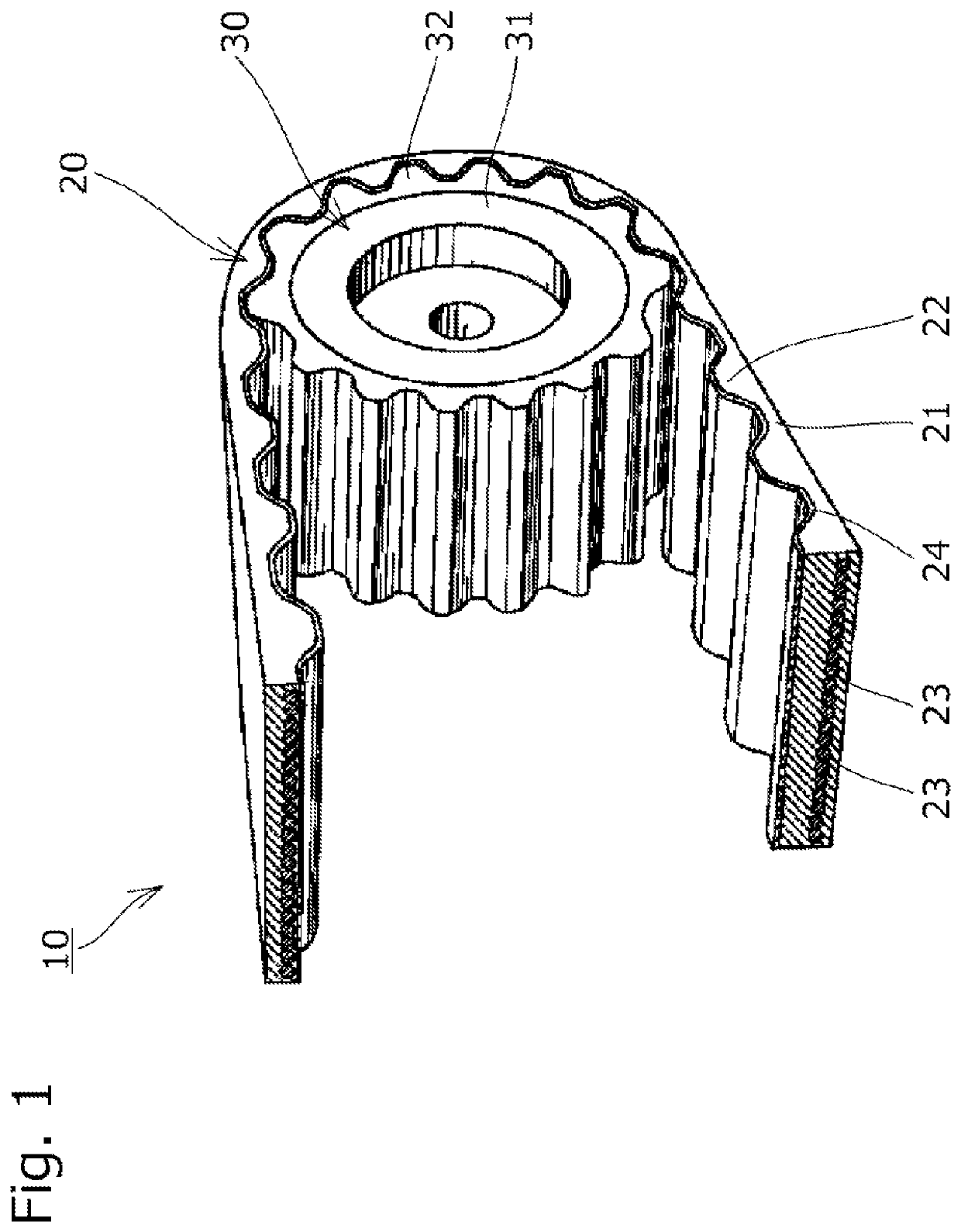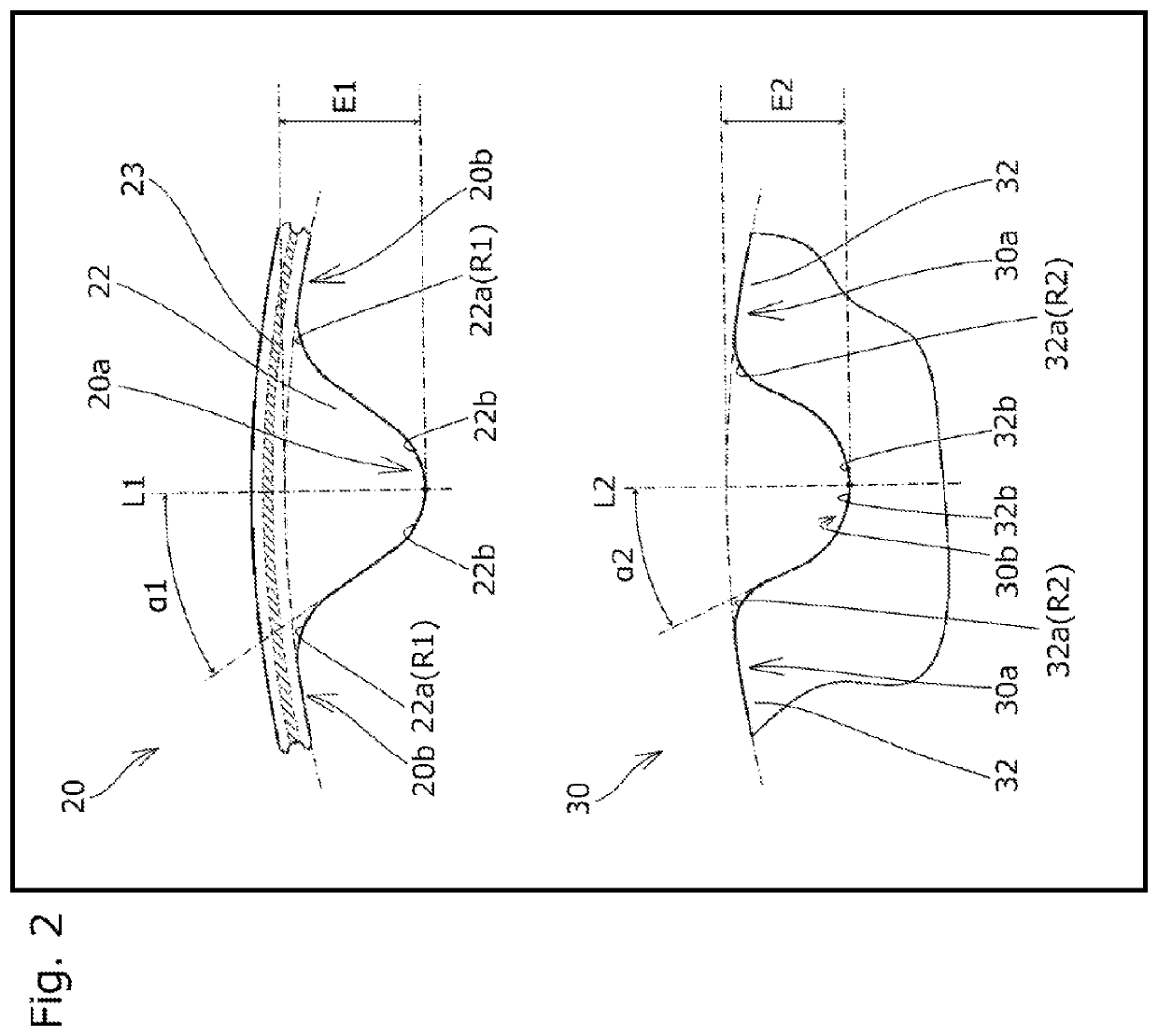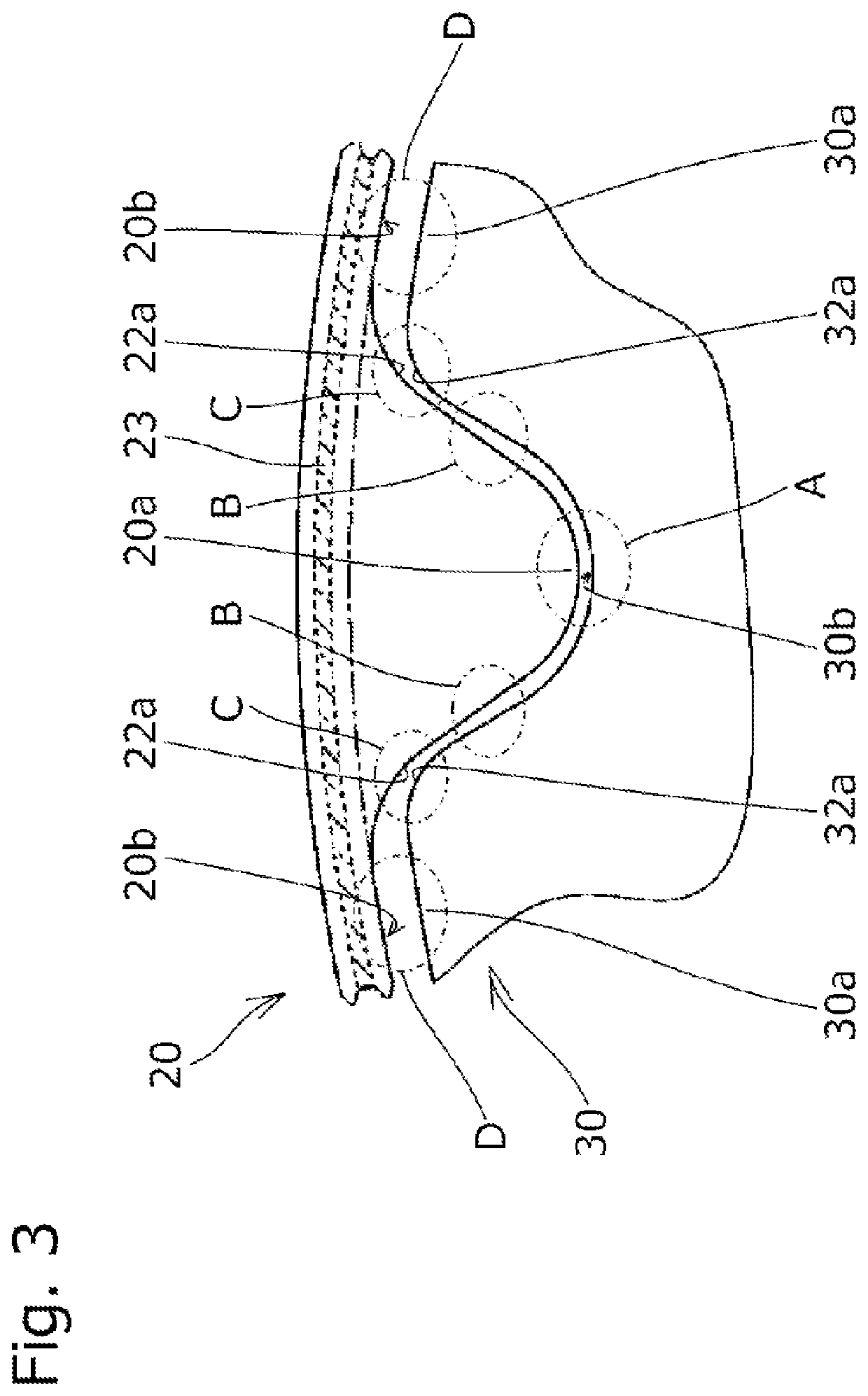[0006]Therefore, the present invention has been made to solve the above problems and has an object of providing a toothed belt transmission that reduces noise and vibration resulting from the engagement between a toothed belt and a toothed pulley, and that improves the durability of the toothed belt.
[0009]Thus, after a shock caused when the toothed belt and the toothed pulley start engaging with each other is absorbed by the elastic deformation of the tooth tip parts of the toothed belt made of an elastic material such as rubber, it is possible to cause the tooth bottom parts of the toothed belt and the tooth tip parts of the toothed pulley to contact each other. Therefore, noise and vibration resulting from the contact between the tooth bottom parts of the toothed belt in which a core wire made of a hard material such as glass fibers and aramid fibers is buried and the tooth tip parts of the toothed pulley made of metal and the like may be reduced.
[0010]In addition, since it is possible to reduce the wear of the tooth bottom parts of the toothed belt resulting from the friction between the tooth bottom parts of the toothed belt in which the hard core wire is buried and the tooth tip parts of the toothed pulley made of the metal by causing the tooth bottom parts of the toothed belt and the tooth tip parts of the toothed pulley to contact each other after the shock caused when the toothed belt and the toothed pulley engage with each other is absorbed by the elastic deformation of the tooth tip parts of the toothed belt, the service life of the toothed belt may be prolonged. In addition, since it is possible to improve an anchor effect by which belt teeth are caught on pulley teeth by setting the height of the toothed belt to be longer, the occurrence of tooth skipping may be prevented. Thus, the wider usage of a toothed belt transmission can be accomplished, allowing the toothed belt to be driven at higher speed, for example.
[0011]According to another embodiment of the present invention, a curvature radius of the tooth root-side concave curved parts of the tooth surfaces of the belt teeth is set to be greater than or equal to a curvature radius of the tooth tip-side convex curved parts of the tooth surfaces of the pulley teeth. Thus, during the engagement between the toothed belt and the toothed pulley, it is possible to cause the tooth root-side concave curved parts of the belt teeth and the tooth tip-side convex curved parts of the toothed pulley to reliably contact each other. Therefore, the following effect may be produced besides causing the tooth root-side concave curved parts of the belt teeth and the tooth tip-side convex curved parts of the toothed pulley to smoothly contact each other to absorb the shock caused when the toothed belt and the toothed pulley start engaging with each other. That is, the tooth root-side concave curved parts of the belt teeth and the tooth tip-side convex curved parts of the toothed pulley are caused to contact each other in a state in which the toothed belt and the toothed pulley engage with each other, whereby the belt teeth are prevented from moving in a back and forth direction (belt longitudinal direction) with respect to the pulley teeth on the tooth root-side of the belt teeth. Therefore, even in a case in which the toothed belt transmission is applied to a device that requires reciprocating operation or an engine in which explosion fluctuation peculiar to an automobile occurs, noise and vibration caused when the belt teeth and the pulley teeth collide with each other in the back and forth direction may be reduced. In addition, since a shearing force applied to the tooth roots of the belt teeth is similarly reduced, the lack of the teeth or the like may be prevented. As a result, the service life of the toothed belt may be prolonged.
[0012]According to another embodiment of the present invention, a pressure angle of the tooth surfaces of the belt teeth is set to be greater than a pressure angle of the tooth surfaces of the pulley teeth. Therefore, when the toothed belt and the toothed pulley engage with each other, gaps are produced between the tooth surfaces of the belt teeth and the pulley teeth at the lateral parts of the belt teeth and the pulley teeth. Thus, compressed air between the tooth surfaces may be released in a tooth trace direction without being trapped to avoid a cause of engagement noise resulting from an explosive sound, while an engagement shock may be elastically relaxed by the gaps between the tooth surfaces. In addition, since it is possible to release the elastic material of the elastically-deforming belt teeth into the gaps between the tooth surfaces, colliding energy may be relaxed. Moreover, since the elastic material of the elastically-deforming belt teeth fill in the gaps between the tooth surfaces, an anchor effect by which the belt teeth are caught on the pulley teeth is improved. As a result, the occurrence of tooth skipping may be prevented.
 Login to View More
Login to View More 


